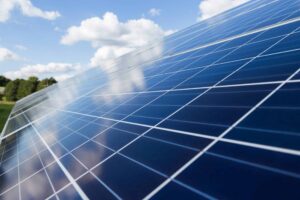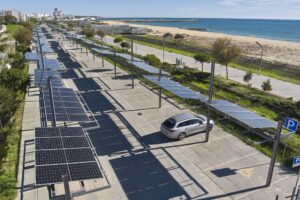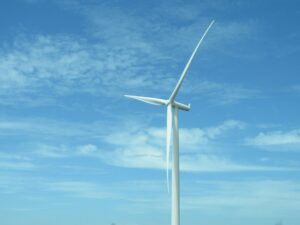By ADRIAN WRIGHT energy@algarveresident.com
Adrian Wright has worked in energy conservation for over 15 years and, in addition to an award winning UK consultancy, is now providing a design and consultancy service in the Algarve through a new company, Ambient Homes. In this series, he will try to help you to save money, protect the environment and have a warmer, healthier home.
STARTLING CLIMATE change forecasts have been produced by the BBC in one of the largest experiments of its kind ever to have been carried out. Forecasts show a likely average temperature rise in the UK and Portugal of around four degrees Celsius by 2080, bringing a higher risk of drought, severe storms and rising sea levels.
In Portugal you are entitled to receive a tax credit of up to 745 euros per year towards 30 per cent of the cost of renewable and sustainable energy sources, in addition to a reduced IVA rate of 12 per cent. Large grants are also available for homes in the UK for both renewable energy and home insulation. But, what are the main renewable technologies, how much do they cost and what are they used for?
Hot water
Solar thermal: Ideal for all homes.
Solar thermal is one of the most cost effective of all renewable energy systems currently available. It uses either a panel or series of tubes through which water is pumped and heated by the sun. The heat is then transferred to your hot water cylinder through a second coil or a smaller pre-feed tank. Solar thermal could provide between 50 to 75 per cent of your hot water.
Typical cost 2,000 to 4,000 euros installed.
Electricity generation
Photovoltaic (PV: Ideal for homes off the electricity grid or as an integrated part of a new building.
PV panels generate electricity from sunlight using silicon cells combined with conversion equipment. PV is a very expensive option and I would not recommend it be installed to existing homes simply as a cost saving measure. PV is an excellent option for homes that are off the electricity grid and should also be considered as an integrated part of new builds, replacing standard roof tiles or providing shade from the sun.
Typical cost 7,000 to 20,000 euros installed.
Micro wind turbines: Ideal for homes in areas of high wind/exposure.
Micro wind turbines can be attached to your home or mounted on a pole to further increase efficiency. Turbines mounted on homes in less exposed areas, such as towns, may generate five to 10 per cent of the home’s electricity consumption, but up to a third may be achieved in more exposed areas.
Typical cost 2,500 to 4,000 euros installed.
Heating
Biomass: Ideal for all homes
In your home Biomass will usually take the form of logs, woodchip and wood pellets. A wood pellet room heater would cost around 1,500 euros. A fully automatic woodchip central heating boiler, capable of heating your whole home, costs around 7,500 euros. Wood pellet and woodchip systems are cleaner and more efficient that standard wood burners and can be just as controllable as a central heating system.
Typical cost 1,000 to 7,500 euros plus installation.
Ground source heat pumps: Ideal for new homes or homes with existing boiler based under floor heating.
This uses the same technology as air conditioning units and fridges. The big difference is the addition of pipes either sunk down in a borehole or in shallow trenches alongside the home. Water is circulated through the ground remaining at a steady temperature of 15 to 20C and then into a heat exchanger, which increases it to around 40C.
These are ideal for under floor heating, can provide cooling for the building in summer and are usually cheaper to run than most other forms of heating because they give out three to four times the energy they consume. Coupled with PV or a micro wind turbine, this can be one of the cheapest and greenest forms of heating available.
Typical cost 10,000 to 15,000 euros installed.
























